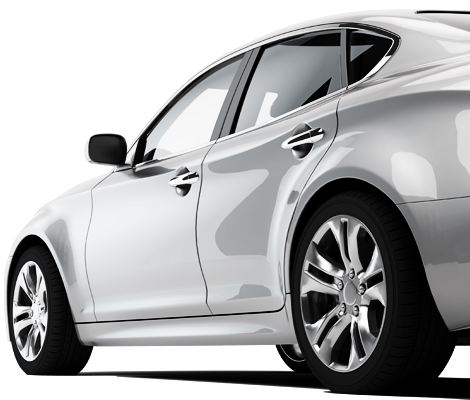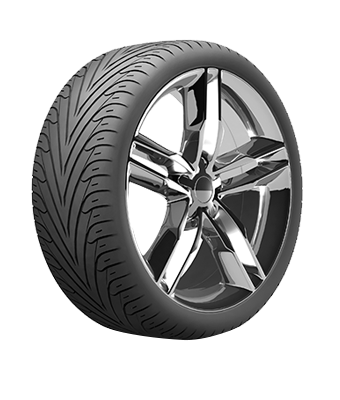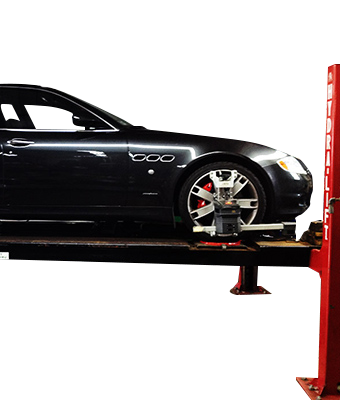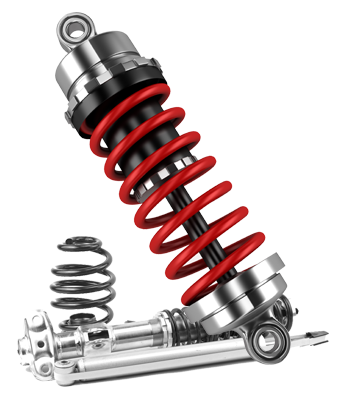Drive Straight Multi-Dimensional Digital Imaging technology
Since the car was invented it has been important that all four wheels track in the same direction! Over time as the car and its components have evolved, so has the way a cars steering and suspension geometry is measured. Today’s vehicles are built for comfort, performance and handling. In order to obtain the best ride possible, the steering and suspension systems need to be measured and adjusted within the vehicle manufacturer’s specifications.
This can be done by taking an alignment measurement of all four wheels. Most modern vehicles require a 4 wheel alignment due to adjustability in both the front and rear steering and suspension systems. There are some exceptions to this depending on the vehicle suspension design. When the rear wheels are not tracking true to the front wheels drivability issues will occur. A misaligned front suspension will also cause problems. This can include anything from the vehicle pulling to one side or the other, odd tire wear patterns, and an off center steering wheel.


Services Pacific alignment and frame services
4 WHEEL ALIGNMENT
Why may I need a wheel alignment?
Your vehicle's wheel alignment can be affected by numerous factors, all of which can contribute to you needing our computerized wheel alignment service. These can include:
- . A major or minor collision that results in structural damage to your vehicle's frame and/or suspension
- .Driving your vehicle through a pothole or running into a curb or median
- .Steering issues such as your vehicle pulling to one side
- .The presence of uneven tire wear patterns
- .Worn out suspension parts such as tie rod ends, ball joints, and bushings
Each scenario provides a clear indication that immediate attention is necessary.


What’s involved?
Before we perform a wheel alignment, we execute a complete check of your suspension. We will provide you with a detailed alignment printout that will include before and after readings, as well as specific reference to three main angles that are checked. Listed below is a further description of what these terms mean.
1 | Caster
Caster is defined as the tilting of the suspension spindle support centerline from true vertical as seen from the side of the vehicle. In simpler terms either the forward or rearward inclination of your front wheels when viewed from the side of the vehicle. This measurement is taken in degrees from true vertical and can be either positive or negative depending on the vehicle. Improperly set caster angle on your vehicle can cause numerous issues such as wandering, hard steering, instability at high speeds, or pulling to either the right or left.
2 | Camber
Camber is the tilting of the wheel centerline when viewed from the front or rear of the vehicle from true vertical. If your tires lean in towards your vehicles centerline, this would be measured as negative camber. If your tires lean away from your vehicles centerline, this would be measured as positive camber. This measurement is taken in degrees and each vehicle manufacturer requires different amounts of camber for each suspension system. Most modern suspension systems require slight negative camber angle for ideal tire to road efficiency and to enhance steering and handling. Improperly set camber angles can cause premature tire wear and vehicle pulling.
3 | Toe
Toe is the final angle to be set when performing a wheel alignment. Toe can be measured in degrees, but more commonly in inches. Toe-in is when the front of the tires are closer together than the back. Toe-out is when the rear of the tires are closer together than the front. This is much like being pigeon toed or not, when looking down at your feet. Excessive toe-in or toe-out can cause rapid tire wear and a very unstable feeling when driving your vehicle.
When your wheels are properly aligned, you'll get:
Tires that last longerEasier steering
Improved gas mileage
Smoother ride
Safer, more secure driving

FRAME WORK
Frame Work Services
If your vehicle is involved in a major collision it is possible that the frame of the vehicle may be damaged. Our shop is capable of repairing both minor and major frame damage, from straightening suspension cross-members and sub-frames from a minor pothole impact to a completely bent frame due to a major impact. We have a twenty-ton pulling capacity frame bench consisting of 4 frame towers that are moveable 360 degrees around the bench to accommodate all repairs to both full frame and unitized frame vehicles. We can accommodate most vehicles up to one-ton trucks in size. A computerized database of frame specifications ensures your vehicle is repaired back to factory specifications.
There are two different types of frames, full frame and unitized frame. A full frame consists of steel frame rails joined with cross-members that run the length of the vehicle. The vehicle’s body and suspension is then bolted to this frame. Unitized frames consist of the frame and the vehicle’s body being built together as one unit. The vehicle’s suspension systems then bolt to this unitized frame. Most current day trucks and large SUV’s use the full frame system, while most current day passenger cars and small SUV’s use the unitized frame system.
Some tell tale signs that your frame may be damaged:
- .Poor fender and door gaps
- .Pickup box fit to cab is out (on trucks)
- .Rear wheels not tracking properly to the front wheels (dog tracking)
- .Vehicle does not sit level
- .Difference in wheelbase
- .Wheel setback in wheel well from one side to the other
OTHER SERVICES THAT WE OFFER
- .Complete suspension diagnostics and repairs
- .Shocks, strut, and spring replacement/repairs
- .Brake repairs
- .Welding, fabricating, and rust repairs
- .Tire sales, installation, balancing and tire pressure monitoring service

About Us Pacific Alignement and Frame Inc. Story
Our Story:
Both shop owners Shayne Pruden and James Kenyon are committed to making your vehicle ‘drive straight’! Both are certified journeyman automotive mechanics in the field of wheel alignment and frame straightening. Shayne has twenty-three years experience and counting in the field and James has fifteen years experience and counting in the field.

Gallery Pacific Alignment and Frame Inc. Gallery

FAQ's Frequently Asked Questions
Improper alignment is a major cause of tyre wear. A properly aligned vehicle can add thousands of miles to tyre life and add better fuel mileage.
Multi-Dimensional Digital Imaging is the latest technology in 4-Wheel Alignment. Using Digital Cameras that read data out of wheel attached sensors and provide them on live computer display for accurate reading and adjustment of front and rear wheels.
Frequently Asked Questions:
COMING SOON...
COMING SOON...
COMING SOON...















